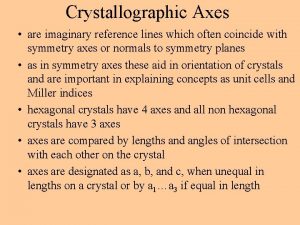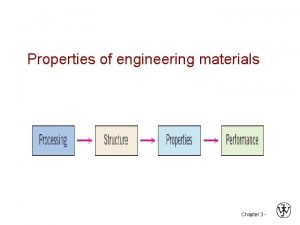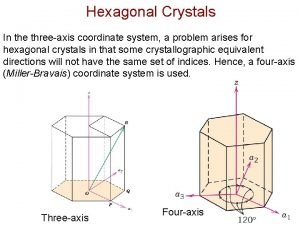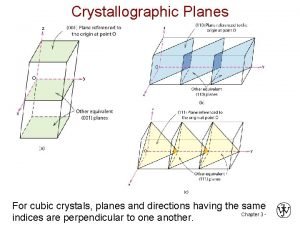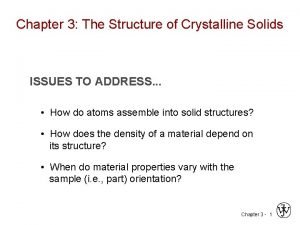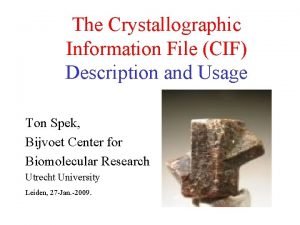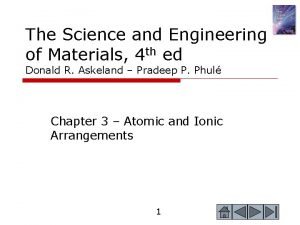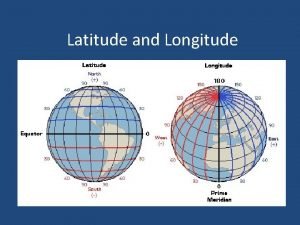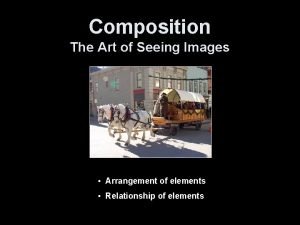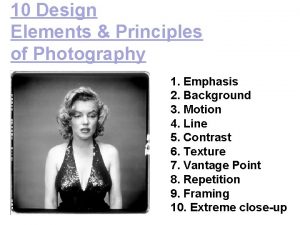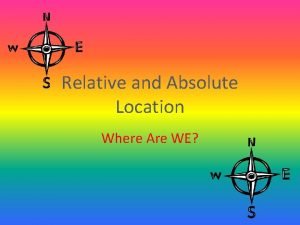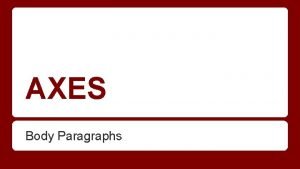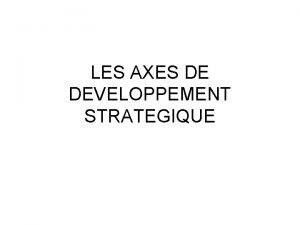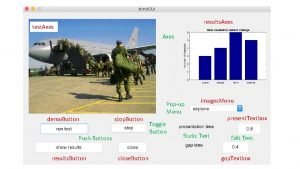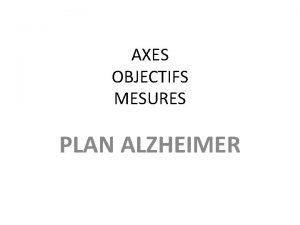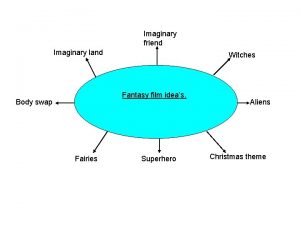Crystallographic Axes are imaginary reference lines which often














- Slides: 14

Crystallographic Axes • are imaginary reference lines which often coincide with symmetry axes or normals to symmetry planes • as in symmetry axes these aid in orientation of crystals and are important in explaining concepts as unit cells and Miller indices • hexagonal crystals have 4 axes and all non hexagonal crystals have 3 axes • axes are compared by lengths and angles of intersection with each other on the crystal • axes are designated as a, b, and c, when unequal in lengths on a crystal or by a 1…a 3 if equal in length

• if the c axis is present, it will always lie in the vertical plane while the a and b axes lie in the horizontal plane • triclinic system--3 unequal axes all intersecting at oblique angles--none of the axes correspond with symmetry axes since none exist • monoclinic system--3 unequal axes, a and c intersect at an oblique angle and the b axis is perpendicular to each--the b axis corresponds to an A 2 axis and lies in a perpendicular plane to the m, if one or both is (are) present

• orthorhombic--3 unequal axes, all mutually perpendicular --the c axis corresponds to an A 2 if present and is that on which the pyramid, dipyramid or dome etc. are found -prism faces, if present are parallel to the c axis • tetragonal--3 mutually perpendicular axes, 2 are equal in length (a, a) and the third, c, is longer or shorter than the others--all forms present form on or parallel the c axis

• hexagonal system--4 axes, 3 equal, found in the same plane and intersect at 60 degrees (a, a, a) and the 4 th axis (c) perpendicular to and longer or shorter than the others-all forms form on or parallel to the c axis • isometric system--3 equal and mutually perpendicular axes

Unit Cell • a 3 -D geometric figure constructed in the array of atoms of a mineral in which there atoms specifically located at corners, on face centers, or one atom at very center of the figure • in addition to these, there are other atoms located within the cell • smallest unit of a mineral that retains all physical, chemical, and crystallographic properties of a mineral • there are 14 unique figures possible for the 6 crystal systems • primitive unit cell (designated as P) • a cell with atoms at all corners but not at face centers nor at very center of cell

primative unit cells atoms at exact corners only triclinic tetragonal monoclinic hexagonal orthorhombic isometric

non primitive unit cells • 1. a cell with atoms at all corners and an atom at the very center of one set of opposite faces--if at top and bottom, C-centered; if on front and back, A-centered; if at center of both side faces, B-centered • 2. a cell with atoms at all corners and one atom at the very center of all faces is an F or face-centered cell • 3. a cell with atoms at all corners and one atom at very center of cell is a I or body-centered cell

non primative unit cells C-centered Orthorhombic C-centered Hexagonal I-centered Monoclinic I-centered Orthorhombic F-centered Orthorhombic I-centered Tetragonal F-centered Isometric I-centered Isometric Rhombohedral

• many minerals may have the same type of primitive or non primitive cell, but each mineral has its sole combination of crystallographic lengths, which results in a kind of genetic code for a mineral---this allows X-ray analysis to generate the name of any mineral • unit cells will combine to result in seeable crystal forms

Axial Ratio • is a ratio of unit cell lengths measured in angstrom units (1 Angstrom unit (Å) = 1 X 10 -8 cm) using the b axis length as common denominator or an a axis length if b is not present • an example is the mineral, sulfur--unit cell lengths are: a = 10. 47 (Å); b = 12. 88 (Å); c = 24. 49 (Å), hence the axial ratio for unit cell for sulfur is 10. 47/12. 88, 12. 88/12. 88, 24. 49/12. 88 or 0. 8135 : 1. 9029 • since all isometric axes are equal, axial ratios • for all isometric unit cells has to be • 1: 1: 1 • what about axial ratios for tetragonal • unit cells?

Face Intercepts ( Parameters) • an analytical way to express unit cell faces as intercepting • • or paralleling crystallographic axes--faces must often be extended to show the relationship designation of axes has already been discussed--a, b, c: a, a, a, c: a, a, a if a face parallels an axis, an infinity symbol is assigned to the axis in the designated axis position if a face intercepts an axis, a ratio of intercept must be obtained--this ratio is obtained by comparing the distance of intercept with the length of the unit cell axis as measured from the unit cell vortex this ratio (absolute or fraction) number is then placed in the appropriate position in the axes designation

• an example is a face on the unit cell or crystal of sulfur • as measured from the vortex, the face intercepts the a axis at 20. 94 Å, the b axis at 6. 44Å, and parallels the c axis • hence the parameters or intercept numbers are 20. 94/10. 47 a, 6. 44/12. 88 b, infinity/24. 49 c = 2 a, 1/2 b, infinityc • a face intercept on the minus side of an axis is designated by the intercept number with a minus above it

examples of face intercepts

Miller Indices • the indices of a face is a series of whole numbers derived from the intercepts • the intercept numbers are inverted, the common denominator found, and fractions cleared if present • examples of conversions from intercepts: • ( 2 a, 1/2 b, c) = (1/2, 2/1, 1/1) = 1, 4, 2 • (infinitya, 3 b, 2/3 c) = (0, 1/3, 3/2) = 0, 2, 9 • once again the minus sign should be included over each minus intercept
 Primative unit cell
Primative unit cell Mikael ferm
Mikael ferm Crystallographic directions
Crystallographic directions Hexagonal coordinate system
Hexagonal coordinate system Crystallographic planes
Crystallographic planes Crystallographic planes
Crystallographic planes Crystallography information file
Crystallography information file Miller indexes
Miller indexes Indices de miller
Indices de miller Important lines of latitude
Important lines of latitude What are the four parts of the art of seeing?
What are the four parts of the art of seeing? Imaginary lines drawn to divide the image into thirds
Imaginary lines drawn to divide the image into thirds Multiview sketch definition
Multiview sketch definition Absolute location in a sentence
Absolute location in a sentence Imaginary lines
Imaginary lines
